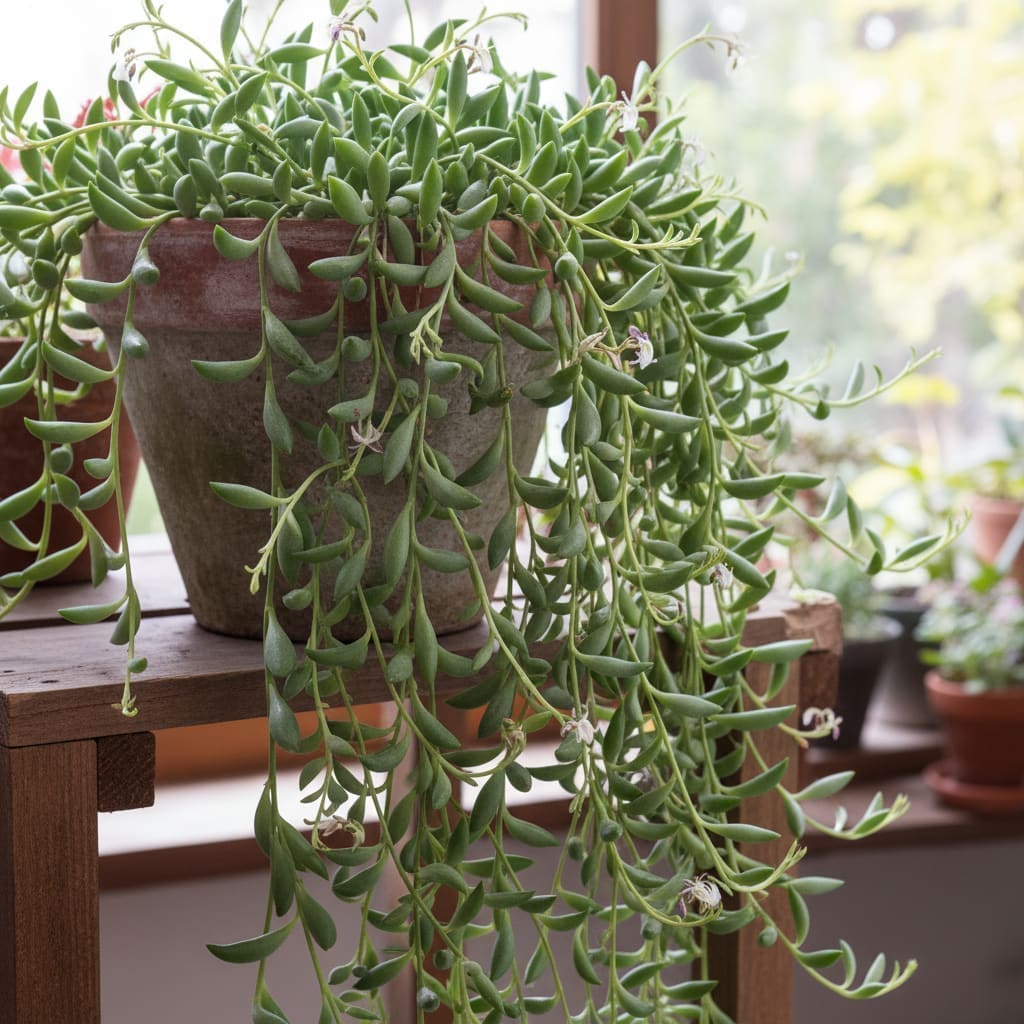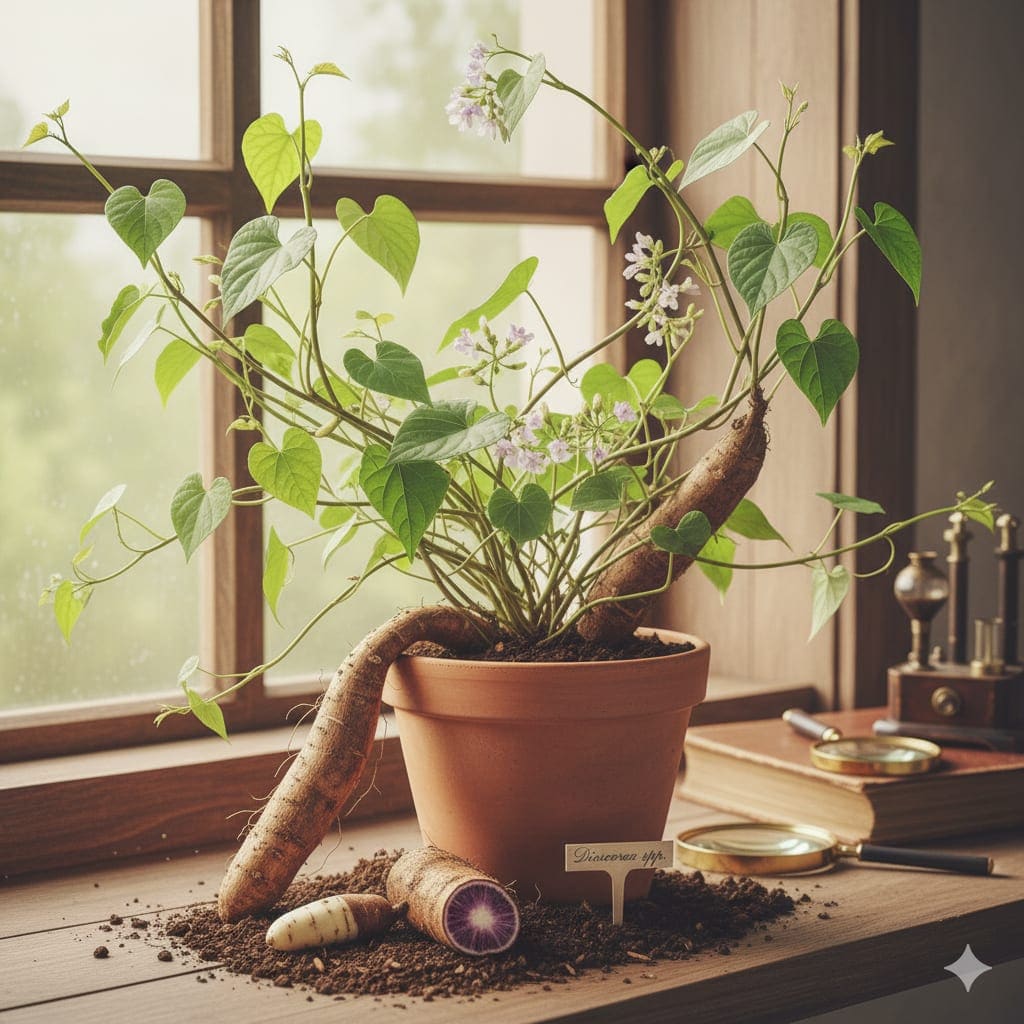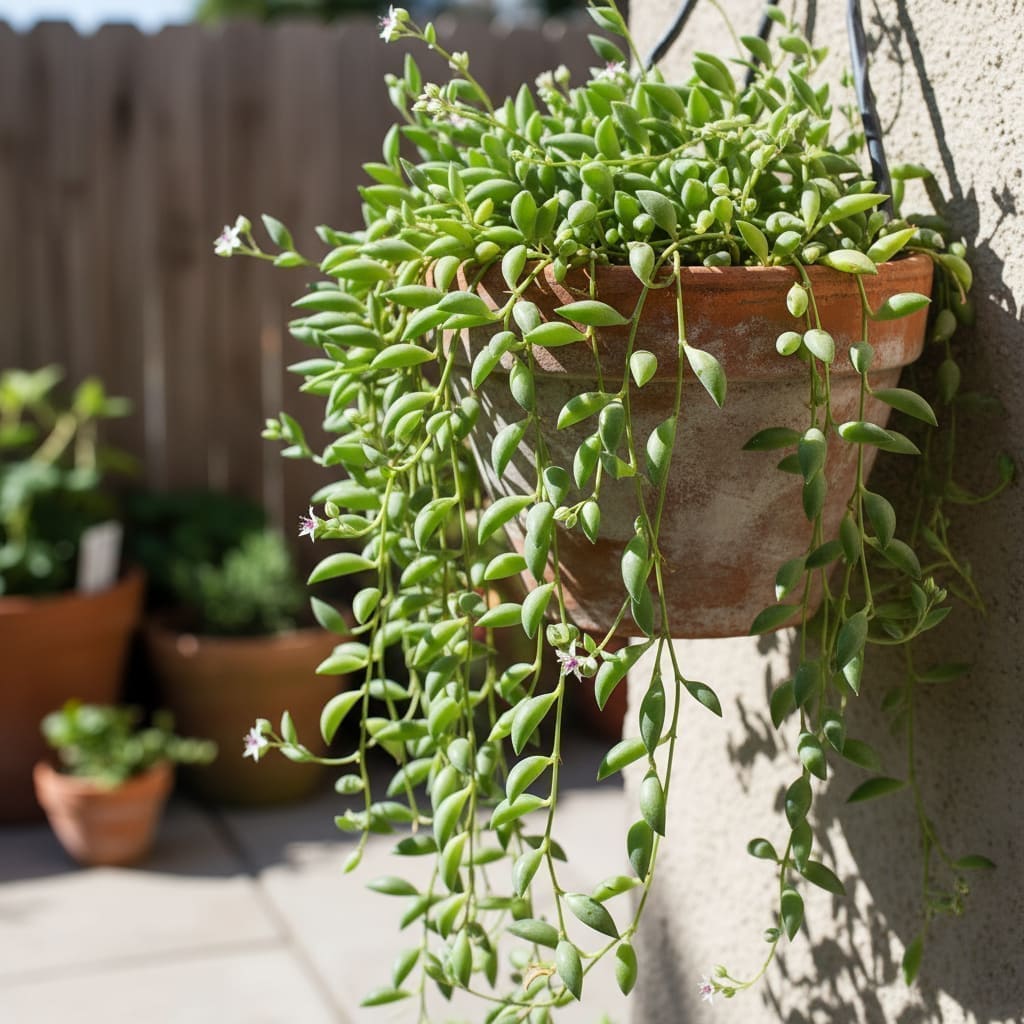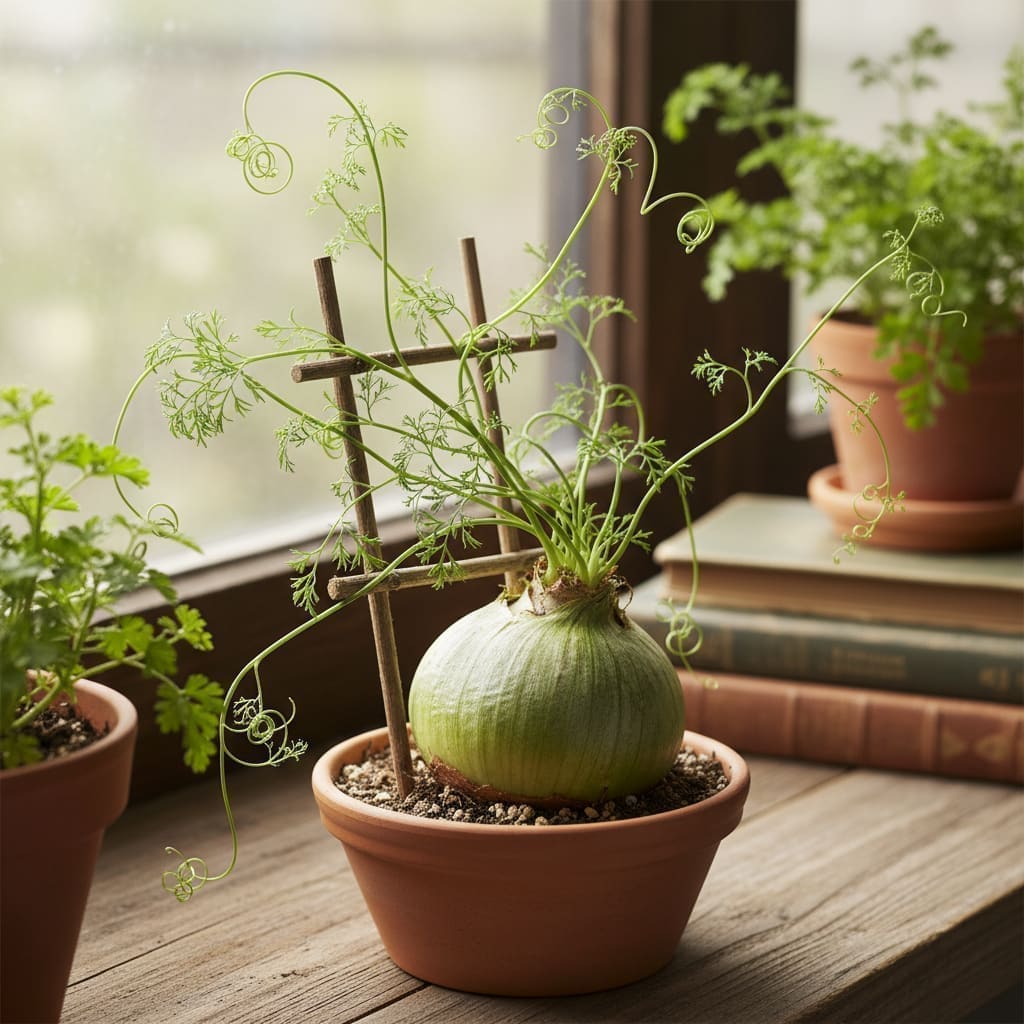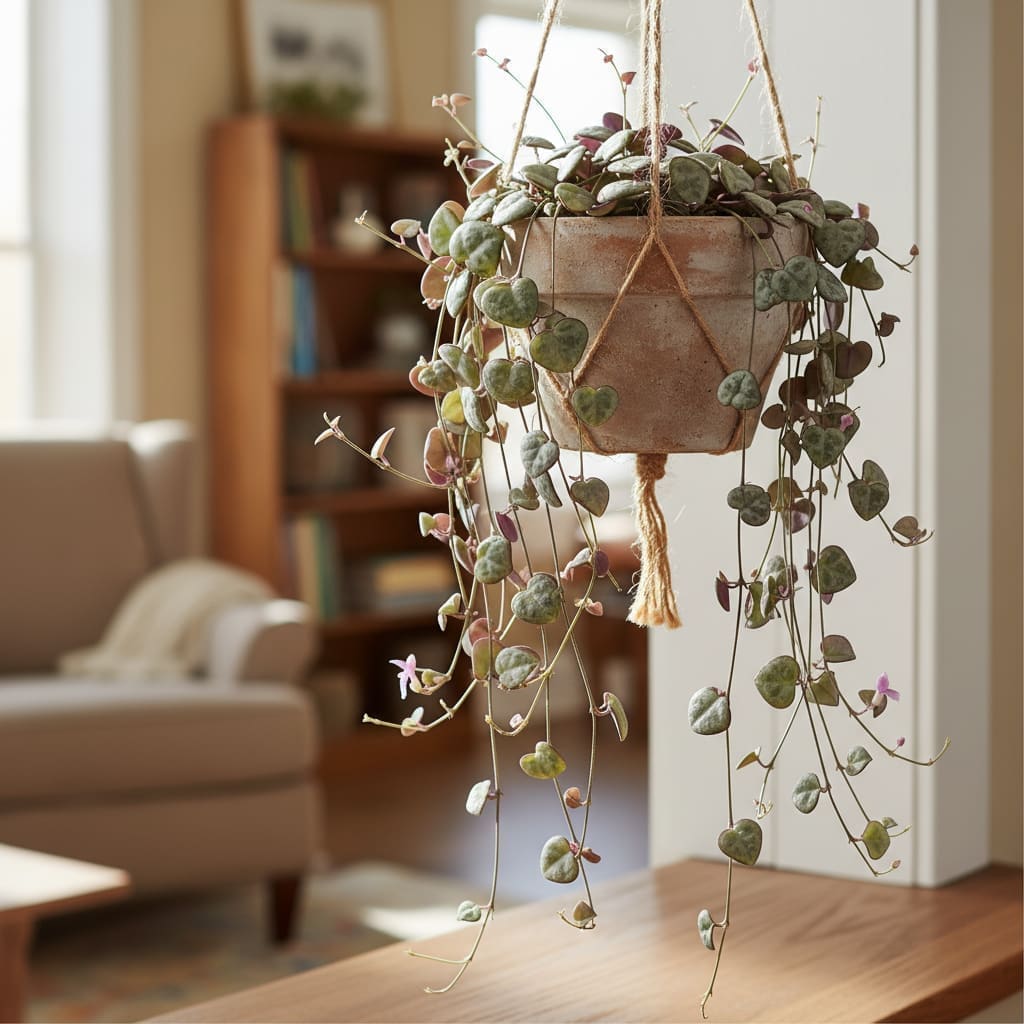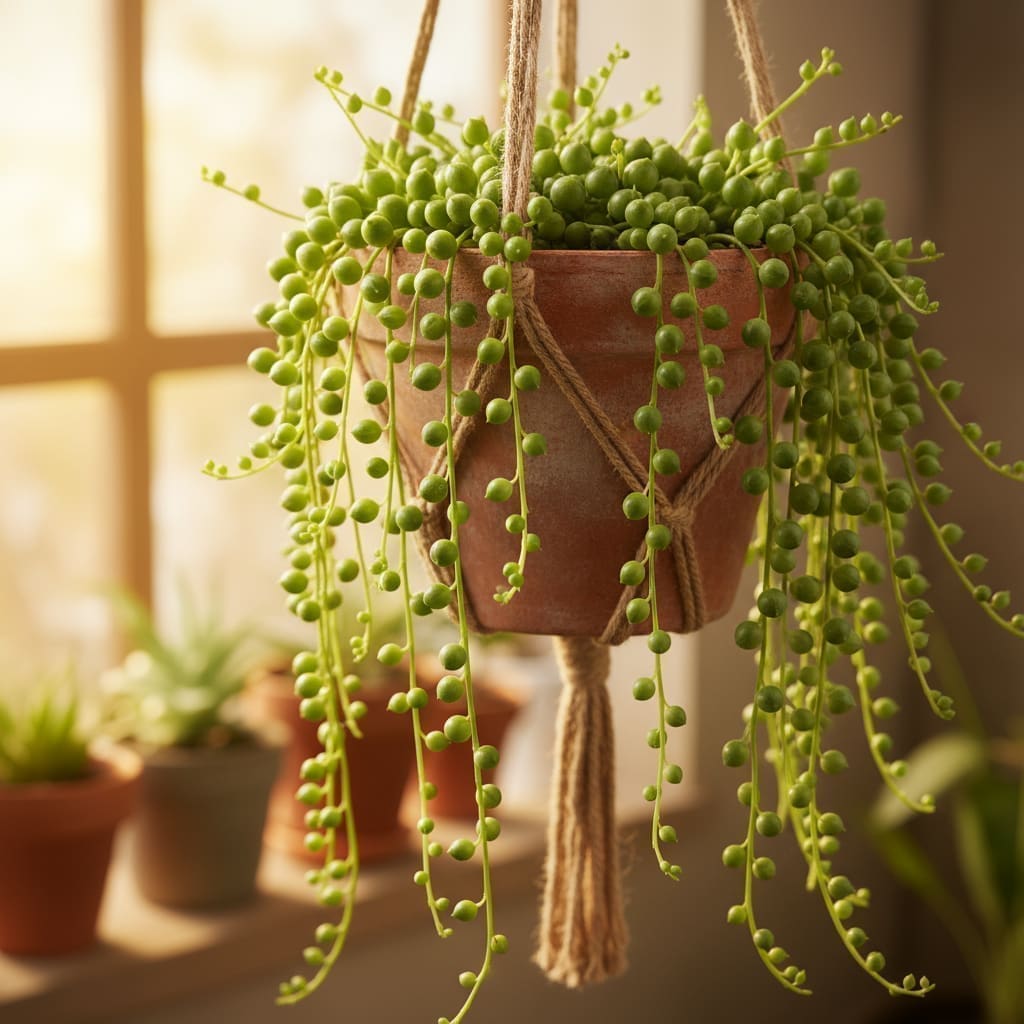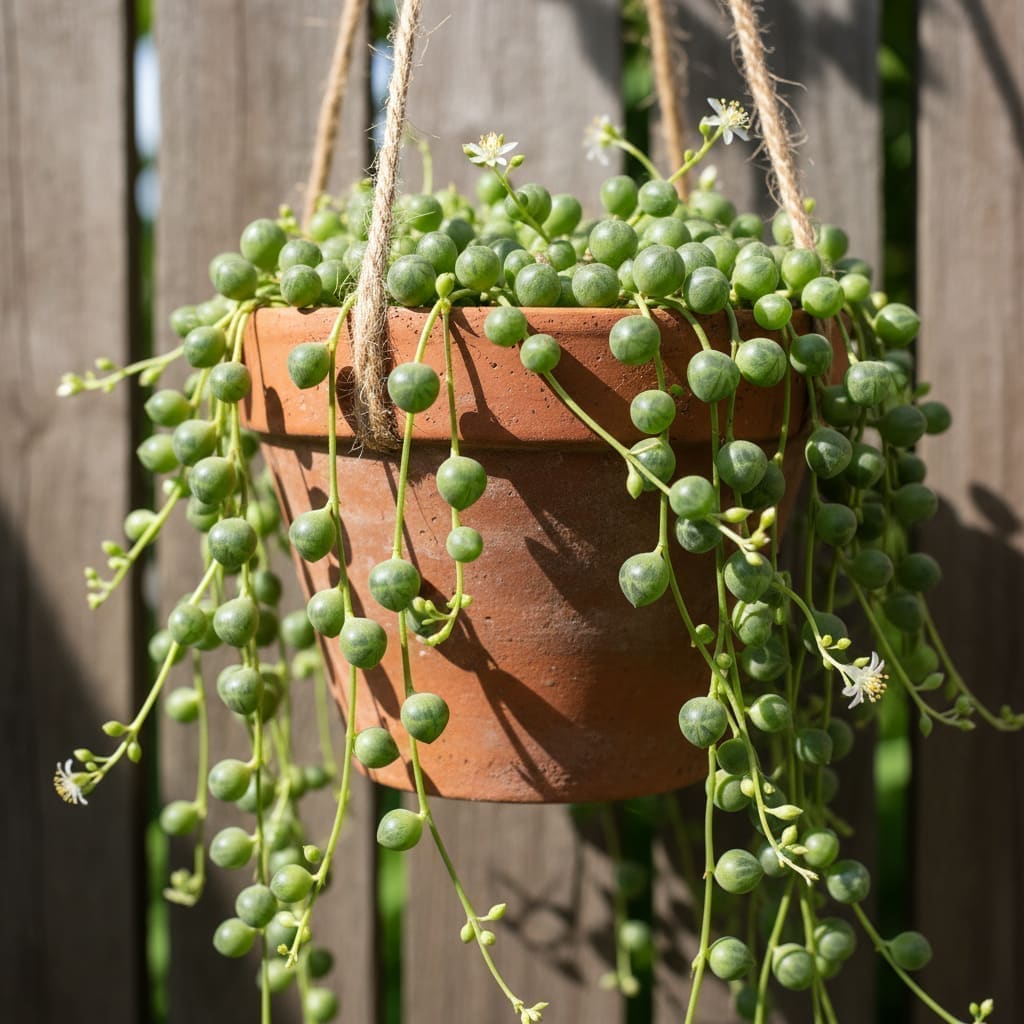Curio radicans ‘Fishhooks’ (String of Fishhooks) Care Guide
Overview
Curio radicans ‘Fishhooks’, commonly known as the String of Fishhooks, is a trailing succulent prized for its cascading stems adorned with curved, bluish-green leaves resembling fishhooks. Native to the arid regions of South Africa, this plant is closely related to the String of Bananas (Curio radicans) but is distinguished by its longer, more slender, and more dramatically curved foliage. It is a low-maintenance houseplant ideal for hanging baskets, shelves, or trained to climb with support.
This species thrives in bright, indirect light, requires infrequent watering, and is well-suited to indoor environments with average humidity. Its drought tolerance and distinctive form make it a popular choice for both novice and experienced plant keepers.
Identification & Growth Habit
String of Fishhooks is a trailing succulent with stems that can reach several feet in length under optimal conditions. The leaves are narrow, slightly translucent, and hook-shaped, an adaptation that minimizes surface area to reduce water loss in its native dry climate. Stems are flexible and can be left to cascade or be trained upward on a trellis or moss pole for a unique display.
When mature, the plant may produce small, white to pale lavender, cinnamon-scented flowers, typically in late winter or early spring, though blooming indoors is less frequent.
Light & Placement
- Provide bright, indirect sunlight for at least six hours daily.
- Morning sun or filtered light through a sheer curtain works well.
- Can tolerate some direct light, but avoid intense afternoon rays to prevent leaf scorch.
- If natural light is insufficient, supplement with a full-spectrum grow light placed 12–18 inches above the plant.
Ideal placement includes east- or south-facing windows with filtered light, or a bright room with consistent illumination.
Watering & Humidity
As a succulent, String of Fishhooks stores water in its leaves and stems. Follow these guidelines:
- Allow soil to dry completely between waterings.
- Water deeply until excess drains from the pot’s holes; discard any water in the saucer.
- Reduce watering in winter when growth slows.
- Average household humidity is sufficient; no misting required.
Soil & Repotting
Use a well-draining succulent or cactus mix. To improve drainage, incorporate coarse sand or perlite (about 25–30% of the mix). Ensure the container has drainage holes to prevent root rot.
Repot every 2–3 years or when the plant becomes root-bound. Choose a shallow pot slightly larger than the current one, as the roots are relatively fine and shallow.
Fertilizing
Feed monthly during the active growing season (spring and summer) with a balanced, diluted liquid fertilizer (e.g., 10-10-10 at half strength). Organic options like liquid kelp or worm compost tea are suitable. Avoid fertilizing in fall and winter.
Pruning & Training
Prune to control length, encourage branching, and maintain shape. Use clean, sharp scissors or pruners to cut stems just above a leaf node. Pruned stems can be used for propagation.
While naturally trailing, String of Fishhooks can be trained to climb:
- Use a small trellis or moss pole inserted into the pot.
- Gently secure stems with soft plant ties or clips.
- Rotate the plant periodically for even growth.
Propagation
Propagation is straightforward via stem cuttings:
- Select a healthy, non-flowering stem at least 4–6 inches long.
- Cut just below a leaf node using sterilized scissors.
- Remove leaves from the bottom 1–2 inches of the cutting.
- Allow the cut end to callous over for 24–48 hours in a dry, shaded area.
- Place the cutting on or slightly into well-draining succulent soil.
- Water sparingly until roots develop (2–4 weeks), then resume normal care.
Common Problems
Pests
- Mealybugs: Appear as cottony clusters on stems and leaves. Remove with a cotton swab dipped in isopropyl alcohol and isolate the plant until clear.
- Aphids: Small green, black, or brown insects on new growth. Rinse with water or treat with insecticidal soap.
- Spider mites: Fine webbing and stippled leaves. Increase air circulation and use miticide if necessary.
Diseases
- Root rot: Caused by overwatering or poor drainage. Remove affected roots, repot in fresh dry soil, and adjust watering routine.
- Stem rot: Often from prolonged moisture on stems. Ensure good air flow and avoid overhead watering.
Toxicity & Pet Safety
Warning: Curio radicans ‘Fishhooks’ is toxic if ingested by humans or pets. Keep out of reach of cats, dogs, and children. Symptoms in pets may include vomiting or lethargy; consult a veterinarian if ingestion is suspected.
Styling & Decor Tips
- Display in a hanging basket to showcase cascading stems.
- Place on a high shelf where vines can drape naturally.
- Combine with other drought-tolerant plants for a low-maintenance arrangement.
- Train on a small hoop or trellis for an unconventional vertical look.
Varieties & Cultivars
Curio radicans ‘Fishhooks’ is a cultivar of Curio radicans. Related forms include the standard String of Bananas, which has shorter, thicker leaves, and variegated forms with cream or yellow streaks. The ‘Fishhooks’ cultivar is favored for its elongated, more dramatically curved foliage.
Buying Tips & Maturity
When purchasing, look for plants with firm, plump leaves and no signs of shriveling or discoloration. Avoid specimens with mushy stems or visible pests. Younger plants may have shorter vines; with proper care, stems can grow several feet long over a few years.
Seasonal Care
- Spring/Summer: Active growth; water when dry, fertilize monthly, and provide ample light.
- Fall: Gradually reduce feeding; maintain light levels.
- Winter: Minimal watering; keep above 50°F; protect from drafts.
FAQ
- How fast does String of Fishhooks grow? In optimal conditions, it can produce several inches of new growth per month during the growing season.
- Can it grow outdoors? Yes, in frost-free climates with bright, indirect light or morning sun. Protect from heavy rain and extreme heat.
- Why are the leaves shriveling? This may indicate underwatering or root damage. Check soil moisture and adjust care accordingly.
- Does it need a deep pot? No, shallow pots are sufficient due to its fine, shallow root system.
- Will it flower indoors? It can, but flowering is more common in outdoor or high-light conditions.
Sources: The Spruce
